Mesa Pioneer Monument
Introduction
Text-to-speech Audio
Images
Mesa's Mormon founding fathers are prominently featured. Photograph by Cynthia Prescott.
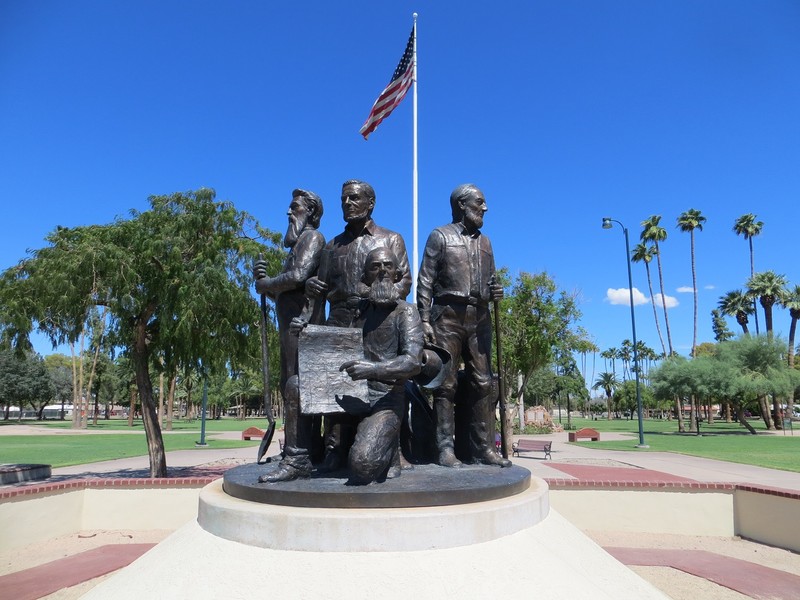
A pioneer mother and her son are seated behind the town's founding fathers. Photograph by Cynthia Prescott.
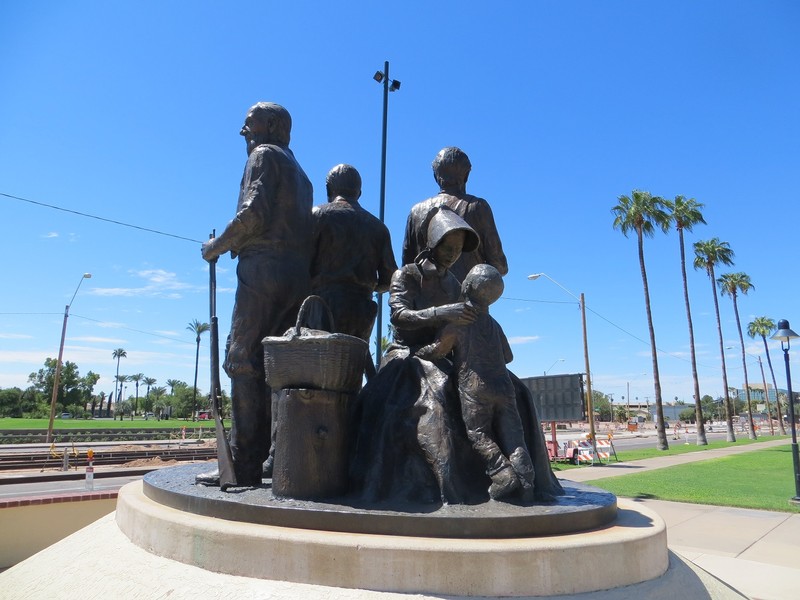
Mesa Pioneer Monument plaque. Photograph by Cynthia Prescott.
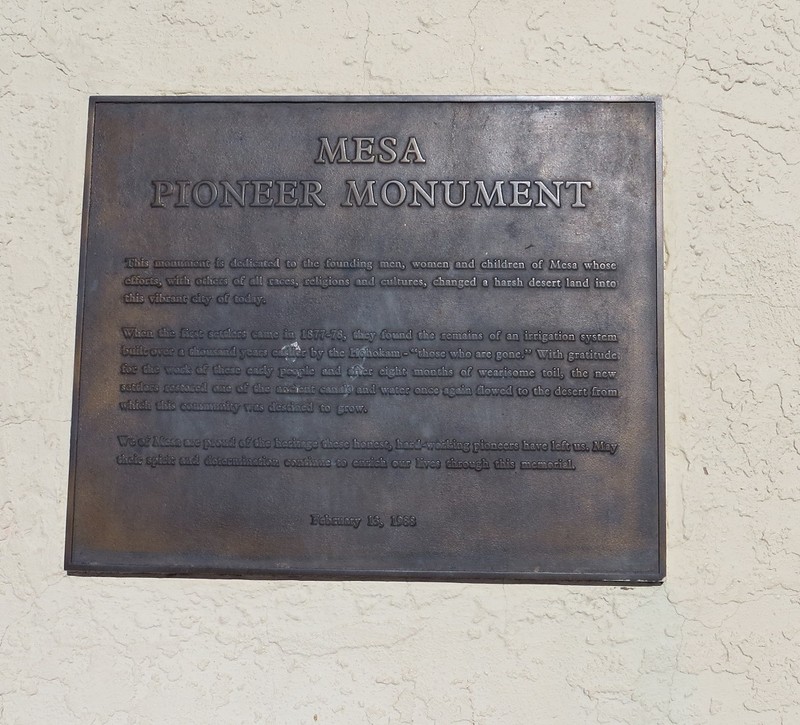
Founding pioneers plaque. Photograph by Cynthia Prescott.
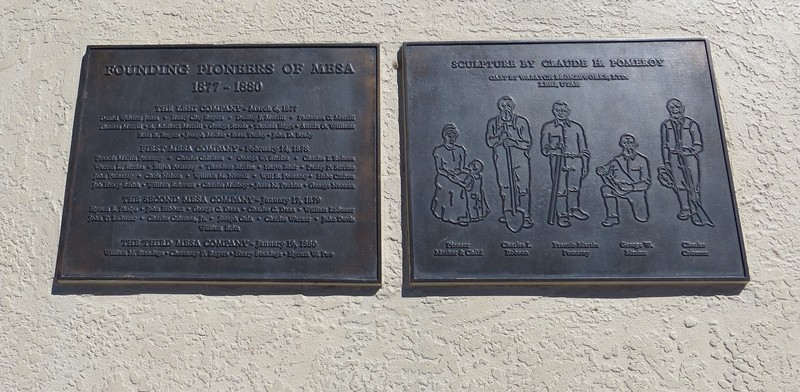
A "mural in stone" dedicated to early settlers stands behind the bronze monument. Photograph by Cynthia Prescott.
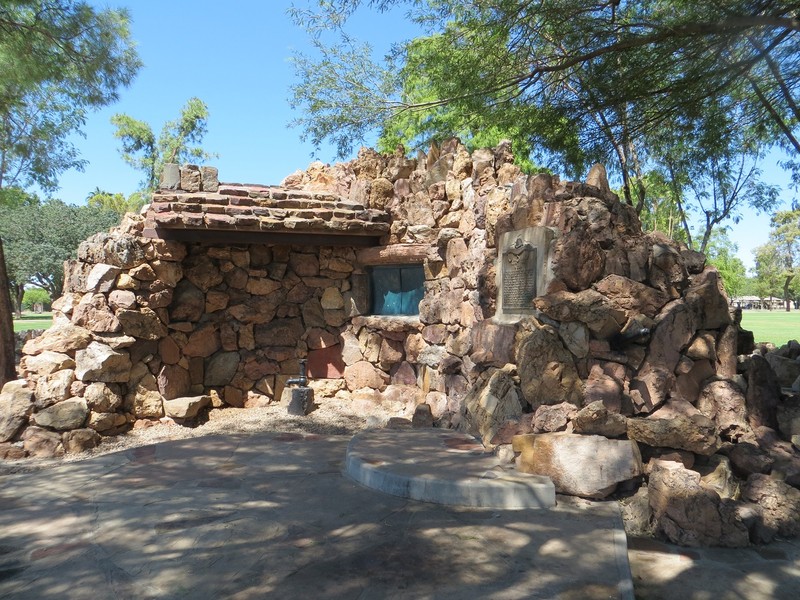
Backstory and Context
Text-to-speech Audio
While on a walk in Mesa, Arizona’s Pioneer Park in the mid-1980s, Claude Pomeroy overhead someone say that the name of the park should be changed to celebrate its popular rose garden. Pomeroy’s grandfather was one of the early white Mesa settlers that the park’s official title commemorates. The younger Pomeroy grew determined to reinforce the park’s connection to those settlers. His solution was to sculpt a public monument to those settlers for installation in the park. The work was his first life-sized bronze. It was dedicated in February 1988.
Pomeroy’s statue honors the four leaders of the First Mesa Company of 1878: Charles I. Robson, George W. Sirrine, Charles Crismon, and Francis Martin Pomeroy, the sculptor’s grandfather. They hold the tools they used to establish the town: a shovel, a level, a townsite map, and a gun. Behind them, an anonymous mother tends to her young son. The basket sitting beside her evokes the female settlers’ efforts feeding and tending to their children and to the male settlers.
Plaques on the side of the monument list the “founding pioneers” of Mesa. All of them were Mormon men sent by the Church of Jesus Christ of Latter-day Saints (LDS) to establish communities that would support the church’s expansion into Mexico. The First Mesa Company celebrated by this statue was actually the second LDS group to settle the area. The First Utah company settled at Lehi (now the northern edge of Mesa) in 1877. When the First Mesa Company arrived the following year, they chose to settle atop the mesa that gives the modern city its name. Claude Pomeroy’s bronze grouping of First Mesa Company leaders now stands on a large concrete base facing the Mesa LDS Temple.
A plaque on the monument’s base indicates it is dedicated “to the founding men, women and children of Mesa whose efforts, with others of all races, religions and cultures, changed a harsh desert land into this vibrant city of today.” It then explains that when those settlers arrived in 1877-78, they found the remains of an irrigation system that was created by an ancient indigenous people, the Hohokam (“those who are gone”). The Mormon settlers restored the 1,000-year-old canals to provide water for agriculture and later urban growth.
Behind the bonze monument stands a “mural in stone” symbolizing the work of early white settlers. An accompanying plaque celebrates those who “conquered” the “desert wilderness…by their covered wagons.” An interpretive sign describes “Arizona’s Honeymoon Trail,” the challenging 400-mile wagon journey to St. George, Utah, that a number of early Mormon settlers made to be married in the nearest LDS temple. Those honeymoon journeys ended with the dedication of Mesa’s temple in 1927.
Claude Pomeroy’s statue is one of two Arizona pioneer monuments that were erected by Mormons. Charles B. Martin’s copper tribute to Arizona’s Pioneer Women was commissioned by the Daughters of Utah Pioneers, an LDS women’s group. It was installed in Wesley Bolin Plaza, adjacent to the Arizona state capitol, in 1968.
Sources
History of Mesa. Mesa Historical Museum. . Accessed February 06, 2019. http://www.mesahistoricalmuseum.com/history-of-mesa.
Prescott, Cynthia Culver. Pioneer Mother Monuments: Constructing Cultural Memory. Norman, Oklahoma. University of Oklahoma Press, 2019.
